By Eric Vandenbroeck and co-workers
Deterring the Nuclear Dictators like
China, Russia, and North Korea
For more than three
decades after the end of the Cold War, the United States and its allies faced
no serious nuclear threats. Unfortunately, that is no longer the case. Russian
President Vladimir Putin has been rattling his nuclear saber in a manner
reminiscent of Soviet leader Nikita Khrushchev. Chinese President Xi Jinping
has directed a dramatic buildup of China’s nuclear arsenal, a project whose
size and scope the recently retired commander of U.S. Strategic Command has
described as “breathtaking.” The Russian and Chinese leaders have also signed a
treaty of “friendship without limits.” North Korean leader Kim Jong Un is
supplying weapons and troops to support Russia’s war in Ukraine, and North
Korea is improving its ability to strike both its neighbors and the U.S.
homeland with nuclear weapons, as it demonstrated with an intercontinental
ballistic missile (ICBM) test launch on October 31.
These developments
pose far-reaching challenges to U.S. national security. The United States no
longer has the luxury of ignoring nuclear dangers and concentrating on
deterring a single adversary. To address this new reality, the Biden
administration has modified U.S. nuclear-targeting guidance to be able to deter
China and Russia simultaneously. It is also developing new nuclear delivery
systems, platforms, and warheads. But Washington’s efforts to modernize the
aging U.S. nuclear deterrent have been hampered by inadequate industrial base
capacity, materials and labor shortages, and funding gaps. What needs to be
done is clear: the next administration should dispense with undertaking an
extensive review of either the nuclear deterrence policy or the modernization
plans. There is a huge need to just get on with the work of modernization and
fix the problems.
More Adversaries, Less Time
Over the past three
decades, incoming administrations have generally undertaken a Nuclear Posture
Review, a time-consuming process to determine U.S. nuclear policy and strategy
for the next five to ten years. To understand why the new Trump administration
should limit itself to doing a quick update of the Biden guidance rather than a
complete Nuclear Posture Review, it is important to recognize the threat and
how rapidly it has grown. Although Russia got off to a slow start in its
nuclear modernization program, that effort is now largely complete. Russia has
achieved a modern strategic triad of land-based intercontinental missiles,
strategic submarines and their associated missiles, and bombers and their
air-launched cruise missiles. Each element of the updated triad is a
significant improvement over previous capabilities, and some are also
destabilizing to the existing strategic balance: the Russian Sarmat, for
example, a massive missile designed to replace the heavy SS-18 intercontinental
ballistic missile, can carry a large number of nuclear warheads designed to
attack American ICBMs in a first-strike scenario.
Test-launching a Trident II D5 missile from an
Ohio-class submarine, near the coast of California, March 2018
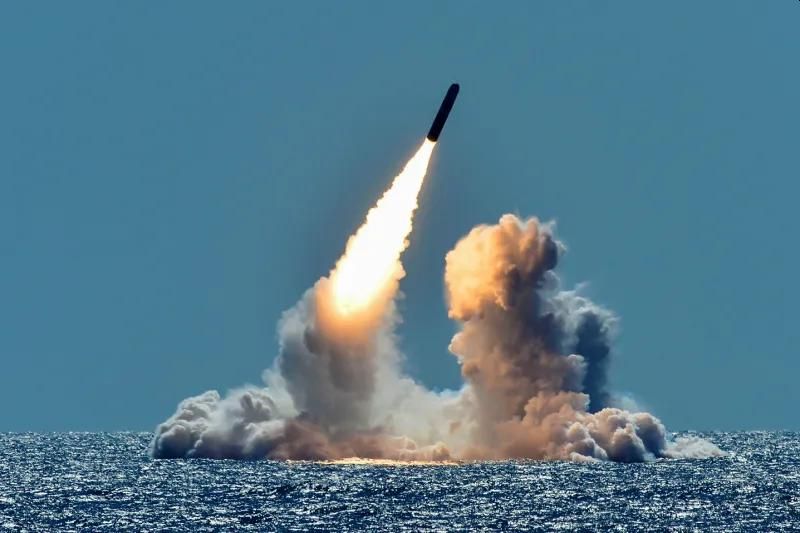
Several new Russian
nonstrategic systems are deeply disturbing. The Poseidon, an
intercontinental-range nuclear torpedo, for example, is designed to devastate
large coastal areas and render them unfit for habitation for centuries to come.
Of even more concern is Russia’s effort to rebuild all elements of its regional
nuclear forces—short- and medium-range missiles that can be launched from the
ground, sea, or air. These systems are clearly intended to intimidate Moscow’s
neighbors and lend substance to Russia’s new nuclear doctrine, announced by
Putin in September, in which the Kremlin broadened the circumstances in which
it might use nuclear weapons.
China has been
modernizing its nuclear forces even faster. Beginning around 2020, Xi ordered a
massive and rapid expansion of China’s arsenal. The number of strategic nuclear
weapons the country deploys is projected to double from 500 to 1,000 by 2030 and
to reach at least 1,550 by the middle of the next decade. Beijing has already
achieved a capable strategic triad, smaller but similar to that of the United
States and Russia, and it is also expanding and diversifying its regional
nuclear forces. Unlike Russia and the United States, China nominally adheres to
a “no first use” policy. But its nuclear forces have in fact acquired
first-strike and launch-on-warning capabilities.
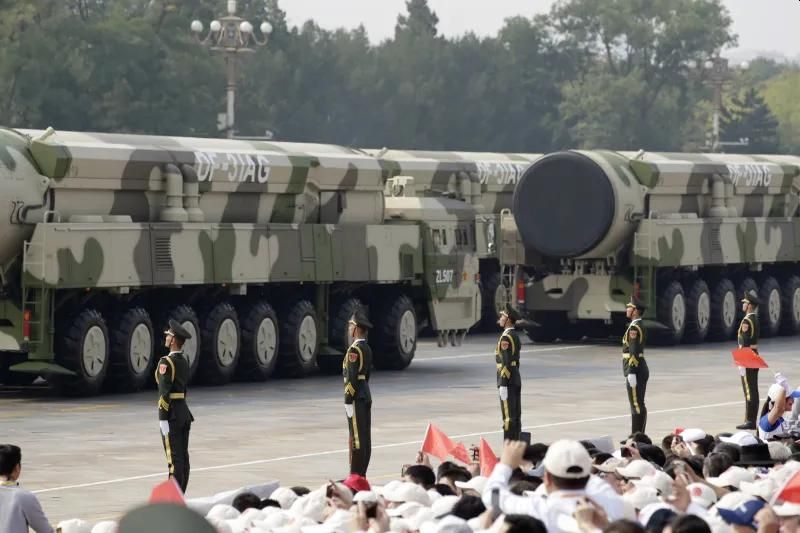
Chinese intercontinental ballistic missiles in a
military parade, Beijing, October 2019
Although China’s and
Russia’s growing arsenals pose serious challenges, the United States’ nuclear
deterrence policy is fully capable of dealing with them. For more than 45
years, U.S. policy has focused on deterring aggression against vital national
interests and those of U.S. allies by maintaining the ability to target the
assets that potential adversaries value most: themselves and their leadership
cadre, the security infrastructure that keeps them in power, selected elements
of their nuclear and conventional forces, and their war-supporting industries.
In the past, such adversaries might have been leaders of the Soviet Union;
today, they are the regimes of Putin, Xi, and Kim.
Nonetheless, the
growth of Chinese nuclear capabilities will present a new challenge by
introducing a third major nuclear superpower by the mid-2030s. In order to
prepare for the possibility of coordinated or opportunistic aggression by both
Russia and China, U.S. President Joe Biden announced in June modified U.S.
targeting guidance, which, as the National Security Council official Pranay
Vaddi has put it, is designed to “deter Russia, the PRC, and North Korea
simultaneously.” Vaddi went on to say, with reference to U.S. nuclear forces,
that the country “may reach a point in the coming years where an increase in
current deployed numbers is required.”
Left unstated but
highly important is determining the correct size of the U.S. arsenal.
Crucially, the United States’ deployed nuclear force must be sufficiently large
to cover the targets that potential enemies value most, as defined by the most
recent targeting guidance and any subsequent updates. But contrary to what some
commentators have suggested, the United States need not and absolutely should
not increase its nuclear arsenal to match that of Russia’s and China’s
combined. The new guidance, when fully implemented, will provide a strong and
effective deterrent. As a result, the incoming Trump administration should
avoid the years-long guidance development process that new administrations
traditionally undertake—beginning with a Nuclear Posture Review.
Rather than trying to
rewrite the Biden administration’s already updated guidance, the new
administration should focus on those areas in which the United States does have
problems: the slow progress of its own nuclear modernization, the large gaps in
its conventional deterrent, and the significant weaknesses in the U.S. defense
industrial base.
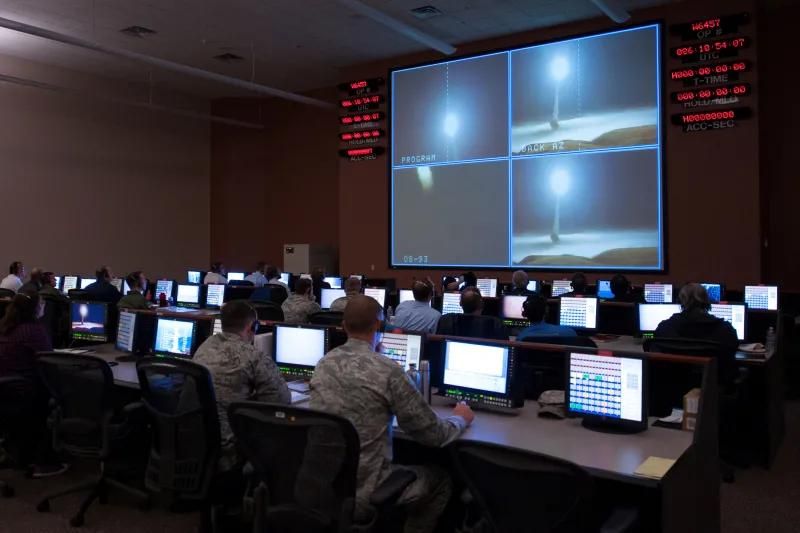
U.S. military officers monitoring a Minuteman III test
launch at Vandenberg Air Force Base, California, March 2015
Three Things at Once
The original creation
of the U.S. nuclear triad was not the result of strategic calculation. The
combination of land-based missiles, submarine-launched missiles, and strategic
bombers arose initially as a result of interservice rivalry in the 1950s. But the
combination of different flight profiles and basing modes proved to be highly
valuable. The first real triad was fielded by the Kennedy administration. Two
decades later, the Reagan administration modernized those forces: it gave the
Minuteman ICBMs new motors and guidance systems, designed a new class of
strategic submarines equipped with new missiles, and provided the aging bomber
force with then stealthy, long-range cruise missiles to ensure their continued
effectiveness. By the turn of the twenty-first century, however, the Reagan-era
triad had become antiquated and should have been replaced. But U.S. strategists
were diverted from this task by a combination of geopolitical assessments—that
Putin, for example, who had come to power only a few years earlier, was not a
threat to the United States or its Western allies and that the overall nuclear
threat had diminished—and the wars in Afghanistan and Iraq.
In 2010, the Obama
administration, as part of its efforts to ratify the New START treaty, a
bilateral arms reduction agreement with Moscow, initiated a program to replace
all three legs of the triad. But the Obama plan immediately ran into
challenges, including budget caps, an inadequate industrial base, workforce
retirements, and the need for parts and materials that no longer existed.
Sadly, all the elements of this program are behind schedule and over budget.
The three legs of the U.S. triad are still safe, secure, and reliable, but they
have been operating well beyond their intended lifespan.
The challenge now is
how to replace the legs of the triad simultaneously—a huge undertaking.
Minuteman III ICBMs were first deployed in the mid-1970s and upgraded in the
1990s. By now, their component parts are obsolete and their lifespan cannot
safely be extended much beyond the mid-2030s. Ohio-class submarines were
designed to operate for around 30 years; 11 out of the 14 boats currently in
commission have served longer than that, and several have been in commission
for more than 35 years. The air-launched cruise missile, deployed in 1980 to
extend the utility of the Eisenhower-era B-52, had a design life of ten years
and is still in service. (It is now scheduled to be retired at the end of this
decade or early next.)
Many of the
replacement weapons themselves have run into development challenges. The
Sentinel ICBM, which was approved in 2014, has incurred a major cost overrun,
in part because it requires the refurbishment of the Minuteman silos and a new
command-and-control system. The navy has recently said that the first
Columbia-class missile submarine—which is designed to replace the Ohio-class
boats—may be delayed by one to two years because of the defense industry’s
inability to produce key components. Although many defense analysts think that
the United States needs at least 200 of the new B-21 bombers to be able to
conduct both conventional and nuclear missions, the program has been
inexplicably limited to just 100 aircraft. The new cruise missile that is intended
for both the B-21 and B-52—a missile known as the long-range stand-off weapon,
or LRSO—has had its near-term funding slashed. This has forced the military to
rely further on an outdated cruise missile that was designed to evade 1980s-era
Soviet air defenses, not the more advanced systems Russia uses today.
An additional
weakness is the U.S. regional nuclear deterrence force. During the Cold War,
the United States deployed several thousand theater-range nuclear systems, but
more than 90 percent of these were eliminated through a series of bilateral
accords with the Soviet Union and Russia in 1991 and 1992. As is well known,
Moscow reneged on its commitments and rebuilt its ground, naval, and air short-
and medium-range nuclear forces. The United States has a small number of
air-delivered bombs in Europe and no dedicated deployed regional nuclear
weapons in the Pacific. Although Washington does not need to replicate the
numbers it maintained during the Cold War, it does need more flexible options.
Congress directed the Biden administration to build and deploy a nuclear-armed
sea-launched cruise missile (SLCM-N) to provide enhanced deterrence to U.S.
partners in the Pacific and to its NATO allies, but this capability won’t be
available for another decade or more.
Tired Tankers, Withering Warheads
Although nuclear
forces provide the backbone of U.S. deterrence, conventional forces are the
United States’ first line of defense. If conventional forces are sufficiently
strong, they can deter the initial stages of aggression by Russia and/or China,
and the questions of war and nuclear attacks could be avoided. But here, too,
there have been recurring failures.
For example, the air
force does not have enough aerial tankers to support conventional or nuclear
forces in multiple theaters. Tankers are needed to refuel U.S. forces in both
Europe and the Indo-Pacific—a dauntingly large geographic area. But for four long
years, the air force has put off the issue, occasionally offering the prospect
of a “bridge tanker” option but never acting on it. And because the
international situation has deteriorated further over those four years, the air
force has a greater tanker shortfall—perhaps 100 or more—than it did in 2021.
The navy has dropped
from its 2025 budget request a Virginia-class submarine—the newest and most
capable class of nuclear-powered fast attack submarines—because of conflicting
priorities with surface ships and defense industry delays. The United States’ nuclear-powered
attack submarine force is well below what is necessary to provide a
simultaneous deterrent in both the North Atlantic and the Pacific. Similarly,
the navy’s mismanagement of ship and submarine overhauls has resulted in
years-long delays on badly needed assets. In the same vein, the navy has
complained for over a decade about Russia’s and China’s growing ability to
block others from entering the waters and air space around their periphery. Yet
it treats the best countermeasure—the hypersonic conventional prompt strike
(CPS) missile—as if it is a luxury. Deployment will occur in dribs and drabs
until the middle of the next decade, even though U.S. combatant commanders in
the European and Asia-Pacific theaters are deeply worried about the next three
to four years.
The B-21 Raider, a strategic bomber developed for the
U.S. Air Force, in Palmdale, California, December 2022
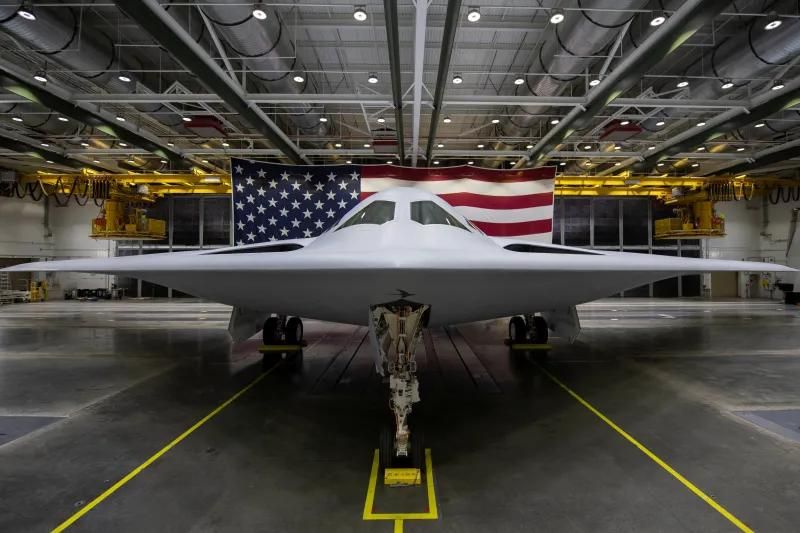
Apart from effective
delivery systems, the United States needs to update the nuclear warheads or
bombs that these systems will carry. In the hopeful period after the end of the
Cold War, China, Russia, and the United States, along with all other nuclear weapons
states, signed the Comprehensive Nuclear Test Ban Treaty, a multilateral
agreement to stop all explosive nuclear testing. Although the treaty has never
entered into force, the United States has unilaterally adhered to it. As a
result, the country has had to rely on means other than testing in the
monitoring and development of its nuclear stockpile.
When Washington
signed the treaty, it assigned the Department of Energy to establish a program
to scientifically replicate the data that had been previously gathered from
nuclear testing. This program was extraordinarily successful, and the DOE and
the National Nuclear Security Administration have been able to maintain all
remaining warheads in the U.S. nuclear stockpile through life-extension
programs. But now that most of the warheads have either been or are in the
process of being “life extended,” the NNSA must start to design and develop new
nuclear weapons using these same scientific and computational capabilities,
rather than testing.
This will not be
easy. For one thing, the NNSA must relearn design and manufacturing skills and
requalify existing vendors or find new ones. The bigger challenge, however, is
the NNSA production complex. Unlike the NNSA’s science and computational facilities,
the production complex was largely ignored after the Cold War. NNSA is now
struggling to keep obsolete facilities—a few of which date back to the
Manhattan Project or the early days of the Cold War—functioning until they can
be replaced. This massive construction program is also behind schedule and over
budget. There are many reasons for this, including a lack of skilled workers,
design difficulties, and a diminished industrial base, but generally this work
hasn’t been done in 25 years.
As NNSA shifts from
extending the lifespan of existing warheads to making new ones, the production
complex must relearn how to produce key components or materials or find
substitutes and adapt to modern manufacturing techniques. A new round of budget
caps is further constraining the ability of the complex to modernize.
Get it Done
The primary task
facing the Departments of Defense and Energy right now is getting the new
systems built. The new secretary of defense should draw on the lessons of
Reagan’s defense secretary, Caspar Weinberger, who, during the triad
modernization effort of that era, instituted a series of ongoing reviews of all
three programs. For each program, he required the service secretary, the
service chief, and the program manager to report to him every three months on
program status and on efforts to fix any apparent problems.
The service
secretariats have now proved themselves unreliable and untrustworthy: the new
defense secretary should institute Weinberger-style reviews for the Sentinel
ICBM, the Columbia-class submarine, the B-21 bomber, and probably the LRSO
missile programs. The administrator of the National Nuclear Security
Administration, in conjunction with the secretary of energy, should adopt a
similar process to review the NNSA warhead and construction programs.
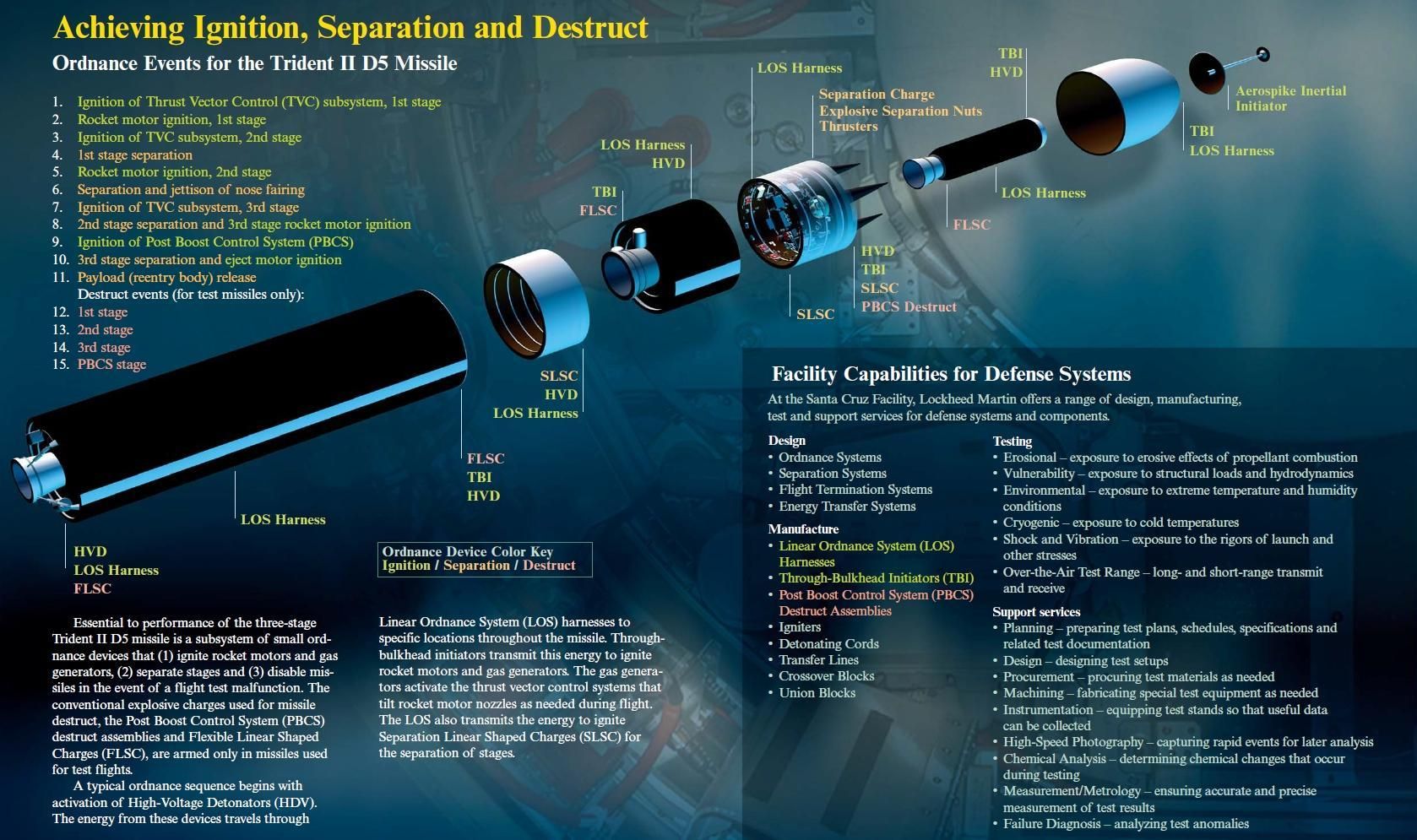
The secretary of
defense should institute similar reviews for redressing the tanker shortfall
and the delays in Virginia-class submarine production, along with speeding the
development of the CPS missile and the nuclear-armed sea-launched cruise
missile (SLCM-N). These reviews should seek to enable the two major submarine
producers to increase their output as quickly as possible; accelerate the
deployment of CPS missiles, even through stopgap
nontraditional means such as box launchers on large deck ships; initiate an
immediate program to buy new tankers and fill in gaps in the inventory with
leased tankers until enough new aircraft can be built and deployed; and assure
and accelerate the development of the SLCM-N missile.
Given the possibility
of further delays in these efforts, the new administration should provide
sufficient funding to ensure that existing deployed systems—such as the U.S.
nuclear command, control, and communications network, known as NC3, and the
Ohio-class submarines—can continue to operate past their currently planned
retirement dates and that the life-extension programs for current stocks of
warheads are fully funded.
The United States
will have to keep the old systems safe, secure, and reliable to continue to
deter Russia and China. This will become especially crucial after the New START
treaty expires in February 2026. To hedge against the premature retirement of
an existing platform, the incoming administration should be prepared to begin a
major effort to assure resilience and flexibility. It can do this by adding
warheads to existing Minuteman and Trident 2 missiles; restoring, on Ohio-class
submarines, the submarine-launched ballistic missile tubes that were disabled
according to New START and loading Trident 2 missiles in them; procuring
additional Trident 2 missile motors to allow a sufficient pool of test assets
to exist after reloading the empty tubes; and “re-converting” to a nuclear role
those B-52 bombers that were rendered incapable of launching a nuclear weapon
under New START.
Additionally, the
administration should seek to increase strategic deterrent forces beyond the
current budget horizon. It can do this by planning to deploy Sentinel missiles
in a multiple independently targetable reentry vehicle (MIRV) configuration,
allowing a single missile to attack several targets at once; increasing the
planned number of deployed long-range stand-off weapons; increasing the planned
number of B-21 bombers and aerial tankers an expanded force would require;
increasing the planned production of Columbia-class submarines and their
Trident ballistic missile systems; and accelerating the development and
deployment of the D5LE2 replacement missile.
Washington should
assess the feasibility of fielding some portion of the future ICBM force in a
road-mobile configuration—an approach that would involve mobile launchers that
could be quickly relocated. It should also speed efforts to develop new countermeasures
to respond to the advanced missile defenses of U.S. adversaries and plan for a
portion of the future bomber fleet to be on a continuous alert status.
Finally, the Trump
administration should get serious about rebuilding the U.S. defense industrial
base. It should rapidly review the Biden administration’s 2023 Defense
Industrial Strategy and October 2024 expanded guidance, updating and revising
both as necessary. It should promulgate this guidance and immediately convene a
summit with the secretary of defense and the CEOs of major defense firms (and
perhaps their major sub-tier suppliers, as well) to expand the base and make it
more agile as rapidly as possible.
The incoming
administration will undoubtedly face calls to hold a full-blown Nuclear Posture
Review to examine and validate existing policy. Every administration since 1952
has reviewed its predecessor’s nuclear (and other) defense policies, but it has
only been since 1994 that this has involved a large interagency review. These
full-scale reviews have on occasion been statutorily mandated, but all have
been hugely time-consuming and on balance have taken a year or more to
complete.
Given that the
current guidance—with the recent Biden changes—is fully up to date and more
than adequate to guide the command’s planning, there is no need for the Trump
administration to conduct a massive review. A quick senior-level review within
the administration should suffice. This not only will preserve a
well-functioning policy but also will avoid a waste of senior-level focus and
get the much-needed updated plans in place sooner. The new administration will
surely face significant new challenges to U.S. nuclear deterrence. The United
States and its allies simply do not have the luxury of waiting another three
years for these challenges to be met.
For updates click hompage here